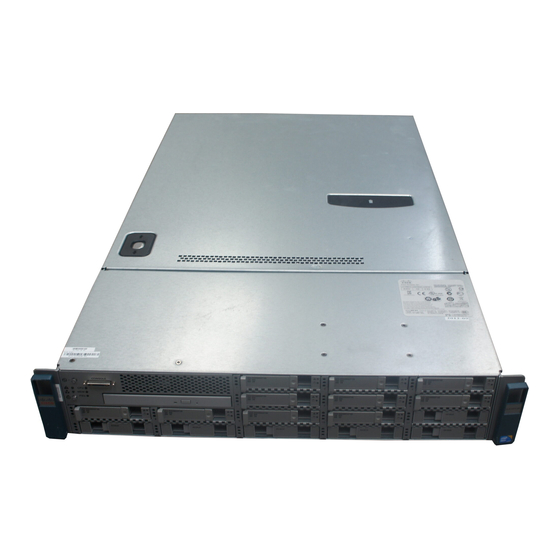- ページ 6
サーバー Cisco UCS C SeriesのPDF アップグレードマニュアルをオンラインで閲覧またはダウンロードできます。Cisco UCS C Series 11 ページ。 Security manager 4.3
Cisco UCS C Series にも: トラブルシューティングのヒント (11 ページ), アップグレードマニュアル (10 ページ), クイック・スタート・マニュアル (12 ページ), セットアップ (10 ページ), 設置マニュアル (19 ページ)

Minimum Software and Firmware Requirements
Upgrade Scenario 3: Standalone Server RMA; BIOS on Spare Server is Earlier Than
the Minimum Version
This scenario is unique to a field-service situation in which a server that is already running Intel Xeon v3
Series CPUs must be replaced (RMA), but the only replacement server available is running a BIOS
earlier than the minimum version.
This scenario assumes the following conditions:
•
•
•
•
Use the following procedure to upgrade the replacement server BIOS to the required version:
After you transfer the Intel Xeon v3 Series CPUs, DDR4 DIMMs, and DDR4 memory risers from the
Step 1
defective server to the replacement server, power on the replacement server.
Note
The Cisco Host Upgrade Utility (HUU) that is normally recommended for upgrading the Cisco IMC and
BIOS cannot be used when the CPUs are non-bootable. However, the HUU ISO image contains a Zip
file that has the images required for updating the server through a browser. Continue with the following
steps to upgrade the server BIOS to the minimum version for your server (or later) by using a browser.
Download the HUU ISO file for your minimum release (or later) from Cisco.com and save it on a laptop
Step 2
or other computer.
Use the instructions in the
Mount the ISO image.
Step 3
Extract the Zip file that is contained within the ISO image.
Step 4
Note
Determine the IP address of the target server that you are upgrading:
Step 5
a.
b.
c.
Use the Cisco IMC GUI in a browser to log in as administrator on the IP address of the target server.
Step 6
Use the Cisco IMC GUI to install and activate the Cisco IMC minimum version for your server (or later).
Step 7
Cisco UCS C-Series Servers Upgrade Guide for Intel Xeon v3 Series CPUs
6
The server is in standalone mode.
The replacement server is using Intel Xeon v3 Series CPUs (after the CPUs are transferred from the
defective server).
The replacement server is using DDR4 DIMMs and DDR4 memory risers (after the DIMMs and
memory risers are transferred from the defective server).
The replacement server is using BIOS/Cisco IMC version earlier than the minimum version for your
server (see
Minimum Software and Firmware Requirements, page
The server does not boot because the BIOS is an earlier version than that required for the new
CPUs and memory.
Cisco Host Upgrade Utility User Guide
To determine the IP address of the target server so that you can log in to its Cisco IMC, you must
connect the server to a DHCP-enabled network, as described in the next step.
Look at the physical MAC address label for the dedicated management port or the LOM1 port,
depending on which port is enabled by default in the target server.
Connect an Ethernet cable for your DHCP-enabled network to the dedicated management port or the
LOM 1 port.
Your DHCP server assigns an IP address to the port.
Query your DHCP server based on the MAC address of the port that you connected. The IP address
of the port that corresponds to the MAC address is listed.
2).
for your release.
